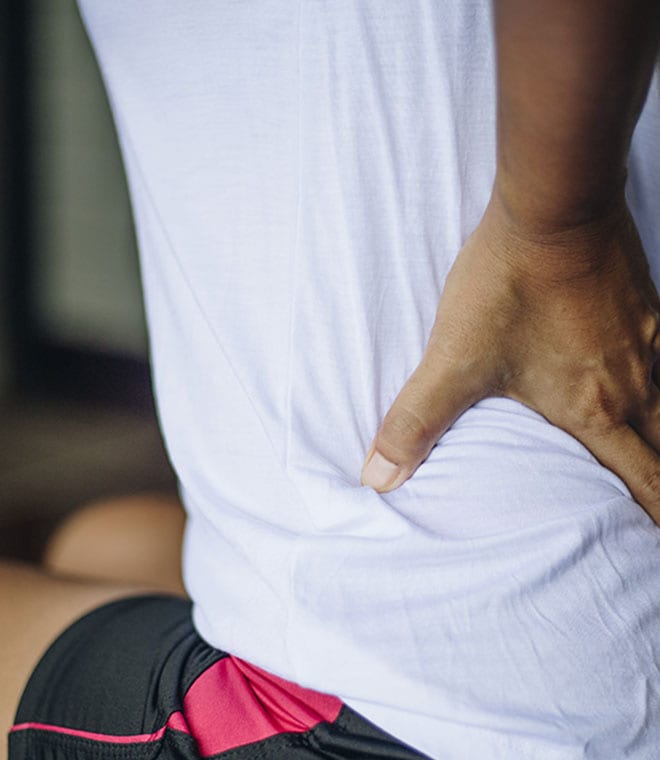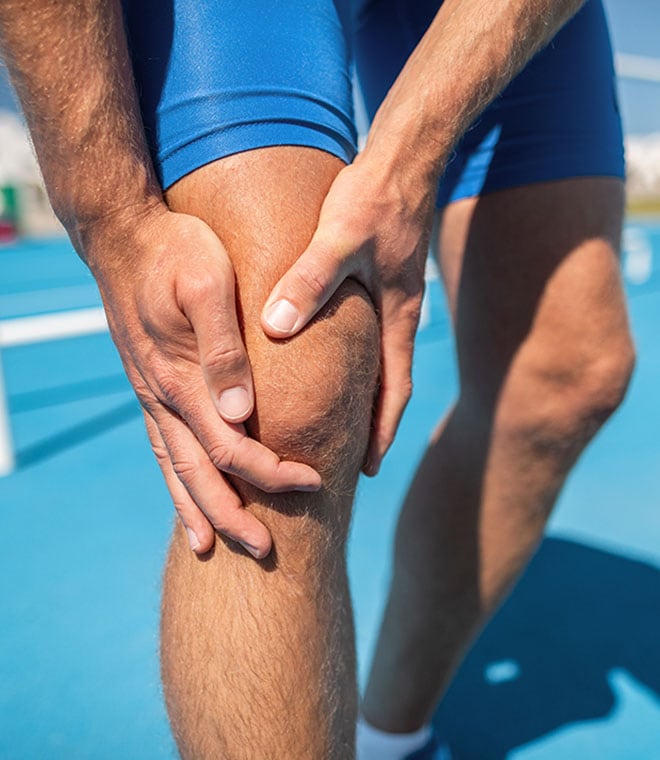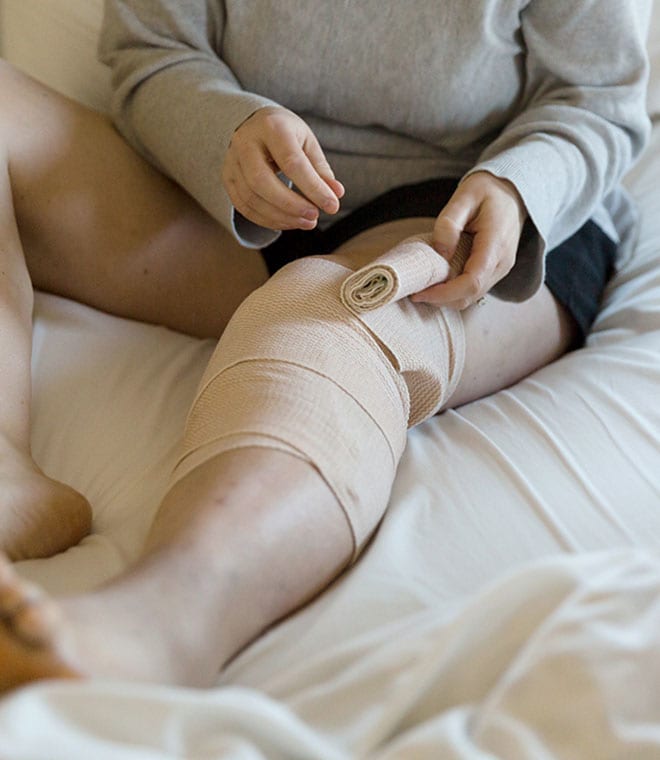Health
What are some products for treating and managing arthritis pain?
By Dennis Galvon, MD Dec 31, 2024 • 7 min
Arthritis is a common condition, and the pain and stiffness associated with this condition can interfere with daily life. Fortunately, a variety of products can reduce your symptoms and help you better manage your pain, allowing you to keep moving and enjoy daily activities.
1. Over-the-counter pain relievers: These medications can provide relief for occasional arthritis pain. Healthcare providers often recommend trying acetaminophen (Tylenol) first, as it poses fewer side effects and risks than other over-the-counter oral pain relievers. Acetaminophen is believed to relieve pain by acting on the central nervous system, although how exactly it works is unknown.
If acetaminophen doesn’t prove effective for managing arthritis pain, nonsteroidal anti-inflammatory drugs (NSAIDs) may be beneficial. These drugs include ibuprofen (Advil, Motrin), naproxen (Aleve) and aspirin. NSAIDs work by blocking enzymes that trigger inflammation, which may provide relief for both joint pain and stiffness.
Although acetaminophen and NSAIDs are generally safe for many people when taken as directed, you may not be able to take them if you have certain medical conditions. It’s important to discuss over-the-counter oral pain relievers with your healthcare provider before taking them regularly to treat arthritis pain.
2. Topical products: Applied to the skin rather than taken orally, topical over-the-counter products may quickly relieve arthritis pain. They tend to work best on joints close to the skin, such as the knees and hands. Topical products are available in patches, creams, ointments, roll-ons and other forms. There are a few types of ingredients, including:
- Topical NSAIDs: Products like diclofenac topical (Voltaren Arthritis Pain and others) contain nonsteroidal anti-inflammatory drugs that work similarly to oral medications but act directly on the joints to relieve inflammation.
- Capsaicin: A chemical that’s found naturally in chili peppers, capsaicin is the key ingredient in some counterirritant topical arthritis products (Capzasin-HP, Zostrix and others). When applied to the skin, it helps block pain signals from the joints to temporarily ease arthritis pain.
- Salicylates: Topical pain relievers with salicylates (Bengay, Aspercreme and others) contain the same substance that allows aspirin to relieve pain.
- Cooling counterirritants: Products like Icy Hot Gel, Biofreeze and Tigerbalm contain menthol and camphor, which produce a cooling sensation when applied to the skin. They can distract the brain from sensing pain signals. This can help soothe arthritis pain.
- Anesthetics: The topical anesthetic lidocaine numbs the skin and the tissue beneath it for short periods to alleviate arthritis pain.
Generally, topical products are less likely to cause serious side effects than oral medications. However, always check with your healthcare provider before trying one of these products since they can trigger skin irritation and allergic reactions in some people.
3. Hot and cold therapy aides: Hot and cold therapy can provide a simple solution for arthritis relief.
Heat therapy increases circulation in the affected area to reduce stiffness and increase flexibility. Heating pads and heating wraps can make heat therapy easy to administer at home.
Cold therapy works by constricting blood vessels and reducing circulation. This can help relieve swelling and pain associated with arthritis. For at-home cold therapy, you can try reusable gel ice packs and wraps that you place in the freezer before use. There are also single-use instant cold packs that become cold when you crack or twist them. Wrap these products in a towel before applying them to your skin to prevent frostbite.
4. Home health care solutions: Modifying your home and using aides when performing certain tasks can help you remain more independent and better manage arthritis. Some types of self-help aides to consider include:
- Dressing aids: Zipper and button pullers make it easier to fasten clothing if you have arthritis in your hands. Use a long-handled shoehorn if you find it difficult to pull on your shoes.
- Kitchen aids: Many products are available to help you perform tasks, such as reaching for objects and opening lids and jars. Small appliances, such as food processors, make it possible to prep ingredients for cooking without gripping knives and other utensils.
- Grab bars: If arthritis limits your mobility, installing grab bars in the bathroom and other areas of your home can reduce your risk for falls.
- Hobby aids: If arthritis interferes with your ability to continue with your hobbies, look for assistive aids. You can find everything from kneelers for use in the garden to modified hands-free frames for quilting and embroidering.
- Mobility aids: Canes, walkers, rollators and other mobility aids can help you remain steady if you have difficulty walking due to arthritis in your hips or knees.
Regular exercise can also be beneficial for those with arthritis. People who exercise regularly have been shown to hurt less, suffer from fewer falls and have a higher quality of life than those who do not exercise. Walking 20 to 30 minutes three or four times a week can make a difference.
Choosing arthritis products
In addition to exploring over-the-counter products for arthritis, discuss treatment options with your healthcare provider. Prescription medications and physical therapy can provide relief and improve quality of life. Unmanaged arthritis may lead to muscle weakness, further joint pain, decreased mobility and joint deformity with certain types of arthritis. Conversely, a modest improvement in muscle strength and flexibility can help improve mobility with less discomfort.
After exercise and physical therapy, surgical procedures and other interventions may be available options to treat and manage arthritis pain. Your healthcare provider can help you weigh the potential benefits and risks of treatments for managing arthritis pain, as well as products and aides. They can also provide personalized advice.
Updated December 2024.
Sources:
- https://www.mayoclinic.org/diseases-conditions/arthritis/diagnosis-treatment/drc-20350777
- https://www.mayoclinic.org/diseases-conditions/arthritis/in-depth/arthriis/art-20046440
- https://www.mayoclinic.org/diseases-conditions/osteoarthritis/in-depth/pain-medications/art-20045899
- https://www.arthritis.org/health-wellness/healthy-living/managing-pain/pain-relief-solutions/comparing-pain-meds-for-osteoarthritis
- https://www.arthritis.org/health-wellness/healthy-living/managing-pain/joint-protection/self-help-arthritis-devices
- https://www.arthritis.org/health-wellness/treatment/complementary-therapies/
- https://medlineplus.gov/ency/patientinstructions/000374.htm
- https://my.clevelandclinic.org/health/diseases/12061-arthritis
- https://www.yalemedicine.org/news/acetaminophen-nsaids-over-the-counter-pain-relievers
- https://health.clevelandclinic.org/heat-or-ice-for-arthritis
- https://www.hopkinsmedicine.org/health/treatment-tests-and-therapies/ice-packs-vs-warm-compresses-for-pain
- https://www.ncbi.nlm.nih.gov/books/NBK482369/
- https://www.mayoclinic.org/drugs-supplements/diclofenac-topical-application-route/description/drg-20063434
- https://www.ncbi.nlm.nih.gov/books/NBK459168/
- https://www.mayoclinic.org/drugs-supplements/capsaicin-topical-route/description/drg-20062561
- https://www.merckmanuals.com/professional/special-subjects/rehabilitation/rehabilitative-measures-for-treatment-of-pain-and-inflammation
- https://www.mayoclinic.org/diseases-conditions/arthritis/in-depth/arthritis/art-20047971
- https://medlineplus.gov/ency/article/001243.htm
- https://www.uptodate.com/contents/camphor-drug-information
- https://www.uptodate.com/contents/methyl-salicylate-and-menthol-drug-information



